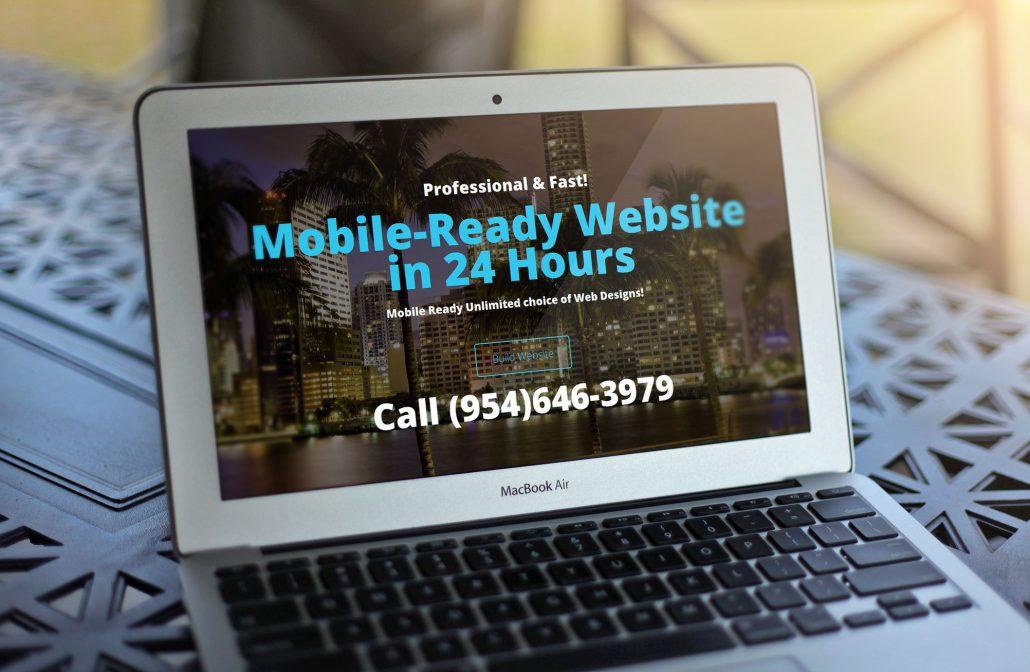E-Commerce Website Development
In the modern digital landscape, the concept of e-commerce websites has become increasingly integral to business success. E-commerce refers to any transaction conducted online, enabling businesses to sell products and services directly to consumers. As digital technologies continue to advance, an escalating number of enterprises are recognizing the necessity of transitioning from traditional brick-and-mortar stores to digital platforms. This transition not only broadens their market reach but also enhances customer engagement and operational efficiency.
As more businesses join the online marketplace, it is crucial to emphasize the opportunities available for newcomers. The rise of e-commerce has facilitated entrepreneurs and established businesses alike to establish a virtual presence, allowing them to compete on a global scale without the geographical limitations of physical storefronts. Various tools and technologies are now available, simplifying the process of developing an e-commerce website, thereby enabling small and mid-sized enterprises to leverage the benefits associated with online retail.
However, the journey to creating a successful e-commerce site involves numerous considerations, including design, functionality, payment processing, and marketing strategies. Each of these components represents a significant aspect of the development process, which ultimately contributes to the website’s overall efficacy and user experience. Understanding the associated costs is essential for businesses aiming to create a sustainable online presence. These costs may range from initial setup expenses to ongoing maintenance and promotional investments.
In the following sections, we will explore the various elements and costs involved in e-commerce website development. We will also examine how strategic planning and expertise from firms like iGlobalWeb can help businesses navigate the intricacies of building their online stores efficiently and economically. A well-developed e-commerce platform can not only ensure survival in the competitive digital market but can also propel businesses toward growth and innovation.
Factors Influencing the Cost of an E-Commerce Website
When it comes to the overall cost of building an e-commerce website, several critical factors play a significant role. One of the foremost influences is the complexity of the website itself. A simple online store with limited products and functionality will naturally require a lower investment compared to a complex platform featuring multiple categories, advanced search features, and user customization options.
Another essential aspect contributing to costs is the desired features integrated into the e-commerce website. Fundamental elements such as shopping carts, payment gateways, user account systems, and inventory management can vary greatly in price depending on their complexity and the level of customization required. Selecting niche functionalities, such as subscription services or advanced analytics, may also drive up costs since they often necessitate more sophisticated development work.
The choice of platform for your e-commerce website dramatically affects budgeting as well. Custom-built solutions can provide tailored experiences but often come with higher upfront costs and longer development timelines. Conversely, platforms like Shopify and WooCommerce offer more economical routes with ready-made templates and plugins; however, they may carry their own costs such as monthly fees or transaction charges that need consideration.
Furthermore, ongoing maintenance costs are a crucial aspect of the total investment needed to run an e-commerce website. Regular updates, security checks, and potential expansions or modifications to the website can require a dedicated budget to ensure everything functions smoothly over time. Factor in the need for customer support, hosting fees, and other recurring expenses which can accumulate and significantly impact the overall financial planning.
Understanding these factors is vital for anyone looking to create a successful e-commerce platform. By thoroughly evaluating each element, businesses can better prepare for the financial commitments that lie ahead in establishing and maintaining their online presence.
Breakdown of Costs: Initial Setup vs. Ongoing Expenses
When embarking on the journey of establishing an e-commerce website, one must consider two categories of costs: initial setup expenses and ongoing operational expenditures. Understanding this financial landscape is crucial for business owners planning to enter the competitive online market.
The initial setup costs generally involve several components, beginning with domain registration. This process entails securing a unique domain name integral for brand identity, with typical costs ranging from $10 to $40 annually, depending on the provider and domain extension chosen. In tandem with domain registration, website hosting services are essential, and the costs can vary significantly—shared hosting may start as low as $5 per month, while dedicated or VPS hosting may soar to $100 monthly or more, influenced by traffic expectations and storage needs.
Design and development represent further key costs. Custom designs crafted by professional web developers can range from $1,000 to over $10,000, depending on the complexity and functionality required. For smaller businesses, utilizing website builders can reduce this expense but may compromise uniqueness. Additionally, integrating essential e-commerce functionalities—such as shopping carts and payment processing—often incurs extra costs, particularly when leveraging third-party applications.
Marketing expenses, especially during the launch phase, should not be overlooked. A budget for initial marketing strategies, including search engine optimization (SEO), social media campaigns, or paid advertising, may range from a few hundred to several thousand dollars, depending on the scale of the campaign and target audience.
After the website launches, ongoing expenses come into play. These may include monthly hosting, domain renewal, periodic website maintenance, and continued marketing efforts. It is crucial to note that costs can also vary significantly based on the business size and scope, with larger companies likely incurring greater expenses due to their operational needs. Therefore, careful planning and budget management are essential for long-term sustainability in the e-commerce sector.
DIY vs. Professional Development: Comparing Costs
When venturing into the realm of e-commerce, one of the pivotal decisions faced by entrepreneurs is whether to build their website through a DIY approach or to invest in professional development services. Each option presents distinct advantages and drawbacks, particularly concerning costs and overall effectiveness.
Opting for a DIY website can initially appear more economical, as many website builders offer low-cost registration fees, coupled with user-friendly interfaces that simplify the building process. However, potential hidden costs can accumulate rapidly. For example, domain registrations, hosting services, premium templates, and plugins may result in expenses that were not initially apparent. Additionally, time is a significant factor; the learning curve involved in mastering web development tools can lead to lost productivity, which could be detrimental to the growth of a new business. A DIY approach may also compromise the quality of the site, leading to performance issues that could hurt customer experiences and, subsequently, sales.
In contrast, hiring professional services, such as those provided by iGlobalWeb, inherently includes expertise, which can be an invaluable asset. Professionals not only have the skills to build a visually appealing and functional site but also understand SEO optimization, which enhances visibility in search engine results. Furthermore, their experience with e-commerce trends allows them to integrate features that enhance user engagement and conversion rates. While the upfront investment might seem substantial, the long-term benefits realized through tailored, high-quality design, better user experience, and efficient management can outweigh initial expenditures. Essentially, professional development services can yield a more robust return on investment by making the website an effective sales channel.
Ultimately, the choice between DIY and professional development hinges on budget constraints, time availability, and the desired quality of the final product. Assessing these factors will help inform the decision that aligns best with one’s business goals.
Key Features that Impact Cost: What Do You Really Need?
When embarking on the journey of establishing an e-commerce website, several key features significantly influence the overall cost. Understanding these functionalities is crucial for making informed decisions that align with your business model, budget, and operational goals.
One fundamental feature is the creation of user accounts. This functionality allows customers to set up personalized profiles, making it easier for them to manage their orders, track deliveries, and save payment information. While optional, user accounts can enhance user experience and drive customer loyalty, which is integral for businesses aiming for repeat sales.
Another critical component is the product catalog. A well-structured product catalog with detailed descriptions, high-quality images, and flexible categorization can enhance user navigation and improve conversion rates. The complexity of your catalog—such as the number of products, variations, and digital assets—will not only affect the design but also the overall development cost of your e-commerce website.
Mobile compatibility is essential in today’s digital landscape, where a significant portion of consumers shop using mobile devices. Ensuring that your website is mobile-friendly can incur additional development costs but is vital for reaching a wider audience and improving user engagement.
SEO optimization is another key feature that impacts the total cost. By integrating effective SEO practices from the outset, your e-commerce website will have a better chance of ranking well in search engines, driving organic traffic, and ultimately increasing sales. It is advisable to consider budgeting for ongoing SEO efforts beyond the website launch to maintain visibility.
Lastly, customer support tools, such as live chat, FAQs, or customer service portals, can greatly enhance user satisfaction. Depending on the complexity of these tools, they can contribute significantly to the overall expenses associated with creating an e-commerce website. Identifying which functionalities are essential based on your business model can help streamline costs while still providing a robust platform for your customers.
The Importance of User Experience in Cost Considerations
User experience (UX) plays a pivotal role in the overall cost considerations of an e-commerce website. It encompasses various elements, including design quality, intuitive navigation, and fast loading times, all of which contribute to how users interact with the website. A well-designed site not only attracts visitors but also ensures that they have a seamless experience while browsing and making purchases. Investing in quality design may involve higher upfront costs, but the return on investment can be substantial in terms of increased customer satisfaction and loyalty.
Intuitive navigation is another critical aspect of UX that directly impacts user engagement. If customers find it difficult to navigate an online store, they are more likely to abandon their shopping carts and turn to competitors. Creating a logical, easily understandable structure for product categories and integrating effective search functionality can significantly enhance user satisfaction. By focusing on simplifying the user journey, businesses can mitigate the risk of lost sales and subsequently reduce costs associated with cart abandonment.
Moreover, site speed can dramatically influence the user’s decision to stay and complete a purchase. Research consistently shows that faster loading times lead to lower bounce rates and higher conversion rates. An investment in optimizing loading speeds can thus bolster overall site performance, resulting in an increase in sales that offsets any initial expenditure. Consequently, a focus on refining the UX can facilitate improved customer retention and encourage visitors to return for future purchases, further enhancing revenue streams.
Ultimately, the cost of building an e-commerce website should be viewed holistically, with user experience being a critical component. The initial investment in quality design, intuitive navigation, and optimized loading times may significantly enhance business outcomes, justifying the upfront costs through improved conversion rates and customer retention.
How iGlobalWeb Reduces Your E-Commerce Development Costs
In the rapidly evolving digital marketplace, establishing a robust e-commerce website is crucial for businesses aiming to expand their reach and drive sales. iGlobalWeb recognizes this necessity and has tailored its services to ensure that businesses can develop an e-commerce platform efficiently and cost-effectively. By leveraging advanced technologies and industry best practices, iGlobalWeb minimizes expenses associated with e-commerce website development while maintaining high standards of quality.
One of the primary ways iGlobalWeb achieves cost reduction is through the use of agile development methodologies. This allows for iterative progress and immediate feedback, ensuring that potential issues are identified and addressed early in the development process. By focusing on collaboration and adaptability, businesses can save both time and money, streamlining the project timeline and reducing overall labor costs.
Additionally, iGlobalWeb provides access to a suite of tools and resources designed to automate various aspects of e-commerce site creation. From content management systems that simplify website updates to integrated payment processing solutions that enhance user experience, these resources allow businesses to operate more efficiently. By reducing the dependency on custom-built solutions, clients can experience significant savings, as many of these tools come with lower overhead costs and require less technical expertise for implementation.
Moreover, iGlobalWeb offers expert consultation services, helping businesses plan their e-commerce strategy effectively. By conducting thorough market analyses and identifying the specific needs of clients, iGlobalWeb ensures that resources are allocated wisely, avoiding unnecessary expenditures. This strategic planning, combined with competitive pricing structures, helps companies stay within budget while still developing a high-quality e-commerce website.
Ultimately, iGlobalWeb is focused on providing a cost-effective framework for e-commerce development, ensuring that clients can achieve their business objectives without overspending. Through efficient methodologies and comprehensive support, businesses can enjoy both a reduced cost of development and exceptional results in the competitive online marketplace.
Case Studies: Businesses That Saved with iGlobalWeb
In exploring the financial impact of e-commerce development, it is essential to consider real-world examples that illustrate the cost-saving benefits of utilizing iGlobalWeb’s services. Several businesses have successfully transformed their online presence while maintaining budgetary constraints. The following case studies highlight key instances where companies have achieved significant savings through iGlobalWeb’s expertise.
One notable case involves a mid-sized retail company that sought to optimize its e-commerce platform. Faced with rising costs associated with their existing website, they approached iGlobalWeb for a comprehensive overhaul. By implementing a custom-built e-commerce solution that featured scaled-back functionality, the client reduced their operational expenditure by 30%. The streamlined user interface not only enhanced the customer experience but also led to a 20% increase in sales within the first quarter post-launch. The client expressed satisfaction with the prompt customer service and the responsiveness of the iGlobalWeb development team.
Another example is a startup specializing in handmade products that required an eye-catching online storefront but had a limited budget. iGlobalWeb provided a cost-effective e-commerce platform using a modular approach that allowed the startup to implement essential features first and expand gradually over time. Initially, the business saved approximately 40% on development costs. The phased strategy ensured that funds could be allocated toward marketing efforts, driving traffic to the site and increasing revenue. The owner noted overwhelming satisfaction with the results, praising iGlobalWeb for its collaborative approach and willingness to adapt solutions to meet specific needs.
These case studies reflect the impact of iGlobalWeb’s services on various businesses, illustrating that strategic planning and expert execution can lead to notable cost savings and enhanced performance in the e-commerce sphere.
As we have explored throughout this blog post, the cost of building an e-commerce website encompasses a variety of factors, from initial setup expenses to ongoing maintenance and marketing. Understanding these different components is essential for any business seeking to establish a robust online presence. We delved into the significance of selecting the right platform, whether it’s a custom-built site or an off-the-shelf solution, as this decision can greatly influence both initial and long-term costs.
Moreover, we highlighted the importance of professional assistance in developing an e-commerce website. Engaging experienced providers like iGlobalWeb can mitigate unforeseen challenges and ensure that the project aligns with best practices in design, functionality, and user experience. The expertise and support offered by professionals can ultimately save you both time and money, allowing your business to focus on growth and customer engagement rather than technical concerns.
In making informed decisions regarding your e-commerce development costs, it is crucial to consider both current needs and future scalability. The choices made today can either provide value or lead to additional expenditures down the line. Therefore, investing wisely in a comprehensive e-commerce solution can greatly enhance your operational efficiency and customer satisfaction. By working with knowledgeable partners such as iGlobalWeb, you can navigate this complex landscape with greater confidence and ease.
Ultimately, a thoughtful investment in your e-commerce infrastructure not only sets the stage for immediate success but also paves the way for sustainable growth in an increasingly competitive market. Take the time to evaluate your options and choose a path that aligns with your business goals and budget. With the right strategy and resources, your e-commerce journey can lead to significant rewards in the future.





